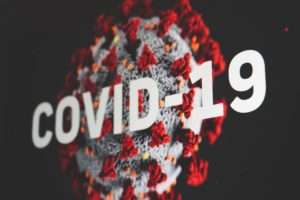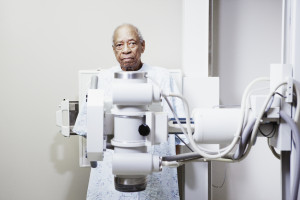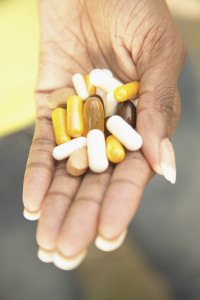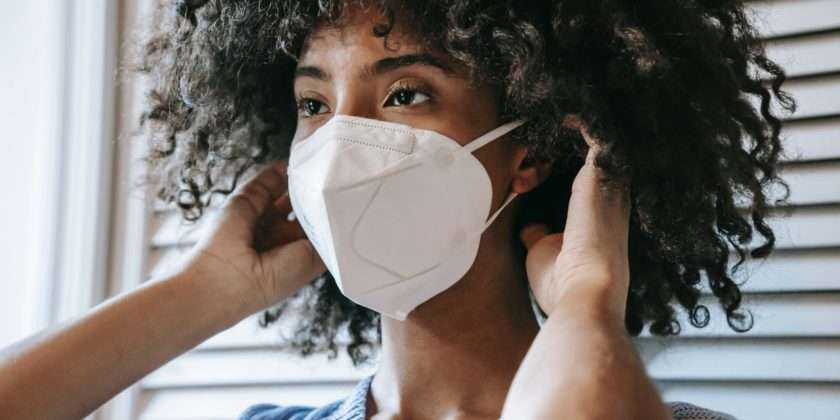There’s misinformation everywhere about COVID-19. Jay Harold wanted to give you some of the latest thinking from one of the most trusted sources in medicine today. the CDC COVID Data Tracker says that the United States has over 78,977,146 cases and 952,223 deaths, @5:05 p.m. on March 3, 2022. In addition, there were 371,161 new cases in the last 7 days. This post, “Pre & Post COVID-19 Meds1” seeks to provide current and relevant information from a trusted source.
General Prevention Measures
Transmission of SARS-CoV-2 is thought to occur primarily through exposure to respiratory droplets. Exposure can occur when someone inhales droplets or particles that contain the virus (with the greatest risk of transmission occurring within 6 feet of an infectious source) or touches their mucous membranes with hands that have been contaminated with the virus. Exhaled droplets or particles can also deposit the virus onto exposed mucous membranes.1
Less commonly, airborne transmission of small droplets and particles of SARS-CoV-2 to people farther than 6 feet away can occur; in rare cases, people passing through a room that was previously occupied by an infectious person may become infected. SARS-CoV-2 infection via airborne transmission of small particles tends to occur after prolonged exposure (i.e., >15 minutes) to an infectious person who is in an enclosed space with poor ventilation.1
The risk of SARS-CoV-2 transmission can be reduced by covering coughs and sneezes and maintaining a distance of at least 6 feet from others. When consistent distancing is not possible, face coverings may reduce the spread of infectious droplets from individuals with SARS-CoV-2 infection to others. Frequent handwashing also effectively reduces the risk of infection.2 Health care providers should follow the Centers for Disease Control and Prevention (CDC) recommendations for infection control and the appropriate use of personal protective equipment.3
Pre-Exposure Prophylaxis -Anti-SARS-CoV-2 Monoclonal Antibodies
Vaccination remains the most effective way to prevent SARS-CoV-2 infection and should be considered the first line of prevention. However, some individuals cannot or may not mount an adequate protective response to COVID-19 vaccines. Other individuals may not have been fully vaccinated because of a documented history of a severe adverse reaction to a COVID-19 vaccine or its components.

Based on the results of PROVENT, a large randomized controlled trial (ClinicalTrials.gov Identifier NCT04625725), the FDA issued an Emergency Use Authorization (EUA) for the anti-SARS-CoV-2 monoclonal antibodies (mAbs) tixagevimab plus cilgavimab (Evusheld) as pre-exposure prophylaxis (PrEP) for certain individuals at high risk of progressing to severe COVID-19 if they become infected with SARS-CoV-2.21 A modification in the fragment crystallizable (Fc) region gives these anti-SARS-CoV-2 mAbs prolonged half-lives; resulting in potential protection from SARS-CoV-2 infection for up to 6 months. This combination of mAbs appears to have activity against the B.1.617.2 (Delta) variant. Although preliminary in vitro data suggests the B.1.1.529 (Omicron) variant remains susceptible to this combination, more data are needed to fully assess the activity and efficacy of this regimen in situations where the Omicron variant is circulating at high levels.22
Recommendations
- The Panel recommends using tixagevimab 150 mg plus cilgavimab 150 mg, administered as 2 consecutive 1.5 mL intramuscular (IM) injections, as SARS-CoV-2 PrEP for adults and adolescents (aged ≥12 years and weighing ≥40 kg) who do not have SARS-CoV-2 infection, who have not been recently exposed to an individual with SARS-CoV-2 infection, AND who:
- Are moderately to severely immunocompromised and may have inadequate immune response to COVID-19 vaccination (BIIa), or
- Are not able to be fully vaccinated with any available COVID-19 vaccines due to a documented history of severe adverse reaction to a COVID-19 vaccine or any of its components (AIIa).
- Tixagevimab plus cilgavimab is not a substitute for COVID-19 vaccination and should not be used in unvaccinated individuals for whom COVID-19 vaccination is recommended and who are anticipated to have an adequate response.
The individuals who qualify as having moderate to severe immunocompromising conditions under this EUA are those who:
- Are receiving active treatment for solid tumors and hematologic malignancies.
- Received a solid-organ transplant and are taking immunosuppressive therapy.
- Received chimeric antigen receptor T cell therapy or a hematopoietic stem cell transplant (within 2 years of transplantation or taking immunosuppression therapy).
- Have a moderate or severe primary immunodeficiency (e.g., DiGeorge syndrome, Wiskott-Aldrich syndrome).
- Have advanced or untreated HIV infection (defined as people with HIV and CD4 T lymphocyte cell counts <200/mm3, a history of an AIDS-defining illness without immune reconstitution, or clinical manifestations of symptomatic HIV).
- Are receiving active treatment with high-dose corticosteroids (i.e., ≥20 mg prednisone or equivalent per day when administered for ≥2 weeks), alkylating agents, antimetabolites, transplant-related immunosuppressive drugs, cancer chemotherapeutic agents classified as severely immunosuppressive, tumor-necrosis blockers, or other immunosuppressive or immunomodulatory biologic agents (e.g., B cell–depleting agents).

Additional Considerations
- If supplies of tixagevimab plus cilgavimab are limited, priority for use as PrEP should be given to those who are at the highest risk for severe COVID-19.
- Tixagevimab plus cilgavimab is authorized for use as PrEP in a population not well-represented in the PROVENT trial (i.e., a very small proportion of participants were immunocompromised).
- Individuals who continue to meet the criteria for use of tixagevimab plus cilgavimab as PrEP and who remain in a setting with ongoing SARS-CoV-2 circulation can receive another dose every 6 months. However, tixagevimab plus cilgavimab has only been studied in clinical trials as a 1-time combination therapy; therefore, no safety or efficacy data exist for repeat dosing.
- If a person has received a COVID-19 vaccine, tixagevimab plus cilgavimab should be administered at least 2 weeks after vaccination.
Other Drugs for Pre-Exposure Prophylaxis
- The Panel recommends against the use of any oral drugs for SARS-CoV-2 PrEP, except in a clinical trial (AIII).
Clinical trials are investigating several agents, including emtricitabine plus tenofovir alafenamide or tenofovir disoproxil fumarate, hydroxychloroquine, ivermectin, and supplements such as zinc, vitamin C, and vitamin D. Please check ClinicalTrials.gov for the latest information.
Hydroxychloroquine, given at different doses and durations, has been studied in randomized controlled trials to assess whether it could prevent SARS-CoV-2 infection in those at risk for being exposed to infected individuals, such as health care workers. One study reported no evidence of a benefit of hydroxychloroquine, and it was ultimately halted due to futility before it reached its target enrollment.23 In another hydroxychloroquine study, which also did not meet its target enrollment and was stopped early, the majority of the potential transmission events were not confirmed by virologic testing.24 Neither study demonstrated any evidence of a reduction in rate of acquiring infection. Both studies reported an increased frequency of mild adverse events in the treatment group.
Post-Exposure Prophylaxis -Anti-SARS-CoV-2 Monoclonal Antibodies
- The Panel recommends against the use of bamlanivimab plus etesevimab and casirivimab plus imdevimab for post-exposure prophylaxis (PEP), as the Omicron variant, which is not susceptible to these agents, is currently the predominant variant circulating in the United States (AIII).
Vaccination remains a highly effective way to prevent SARS-CoV-2 infection. However, despite widespread availability of COVID-19 vaccines, some individuals are not fully vaccinated or cannot mount an adequate response to the vaccine. Some of these individuals, if infected, are at high risk of progressing to serious COVID-19. Bamlanivimab plus etesevimab and casirivimab plus imdevimab have received FDA EUAs for PEP; however, the predominant variant currently circulating in the United States is the Omicron variant. The Panel recommends against the use of these anti-SARS-CoV-2 mAbs because the Omicron variant is not susceptible to them (AIII).
Chloroquine and Hydroxychloroquine
- The Panel recommends against the use of hydroxychloroquine for SARS-CoV-2 PEP (AI).

Both chloroquine and hydroxychloroquine have in vitro activity against SARS-CoV and SARS-CoV-2.25,26 A small cohort study without a control group suggested that hydroxychloroquine might reduce the risk of SARS-CoV-2 transmission to close contacts.27 There have been several large trials to determine whether hydroxychloroquine can reduce the risk of infection after exposure to individuals infected with SARS-CoV-2. These studies used different dosing schedules and targeted different at-risk populations. In addition, some studies were unable to confirm infection using molecular or antigen tests. None of these studies demonstrated any evidence of efficacy for hydroxychloroquine, and all showed a higher risk of generally mild adverse events in those who received the drug.28-30
Other Drugs for Post-Exposure Prophylaxis
- The Panel recommends against the use of other drugs for SARS-CoV-2 PEP, except in a clinical trial (AIII).
A number of other agents (e.g., ivermectin, hyperimmune gamma globulin, convalescent plasma, interferons, tenofovir with or without emtricitabine, vitamin D) are currently being investigated for SARS-CoV-2 PEP. The latest clinical trials for SARS-CoV-2 PEP can be found at ClinicalTrials.gov.
High concentrations of ivermectin have been shown to inhibit SARS-CoV-2 replication in vitro.31,32 Population data indicated that countrywide, mass-use of prophylactic chemotherapy for parasitic infections, including the use of ivermectin, was associated with a lower incidence of COVID-19.33 At this time, few clinical trials have evaluated the safety and efficacy of using ivermectin for SARS-CoV-2 PrEP or PEP. Although several studies have reported potentially promising results, the findings are limited by the design of the studies, their small sample sizes, and the lack of details regarding the safety and efficacy of ivermectin.
In a descriptive, uncontrolled, interventional study of 33 contacts of patients with laboratory-confirmed COVID-19, no cases of SARS-CoV-2 infection were identified within 21 days of initiating ivermectin for PEP.34 In a small, case-control study in SARS-CoV-2-exposed health care workers, 186 participants who became infected were matched with 186 uninfected controls. Of those who received ivermectin after exposure to SARS-CoV-2, 38 were in the infected group and 77 were in the uninfected group, which led the investigators to conclude that ivermectin reduced the incidence of SARS-CoV-2 infection.35

Know the Risks and Benefits of Drugs you are taking
Chloroquine and Hydroxychloroquine
- The Panel recommends against the use of hydroxychloroquine for SARS-CoV-2 PEP (AI).
Both chloroquine and hydroxychloroquine have in vitro activity against SARS-CoV and SARS-CoV-2.25,26 A small cohort study without a control group suggested that hydroxychloroquine might reduce the risk of SARS-CoV-2 transmission to close contacts.27 There have been several large trials to determine whether hydroxychloroquine can reduce the risk of infection after exposure to individuals infected with SARS-CoV-2. These studies used different dosing schedules and targeted different at-risk populations. In addition, some studies were unable to confirm infection using molecular or antigen tests. None of these studies demonstrated any evidence of efficacy for hydroxychloroquine, and all showed a higher risk of generally mild adverse events in those who received the drug.28-30
Jay Harold hopes you enjoyed this post, “Pre & Post COVID-19 Meds” Please share it and read more about Jay Harold here. Please take this advice from Muhammad Ali and give it back to others. “Service to others is the rent you pay for your room here on earth.”
Click this link to get free Health and Wealth information to improve your life. Play the free “Slow Roll Through Civil Rights” Game found on the Jay Harold website. Enjoyed this post? Share it and read more here.




